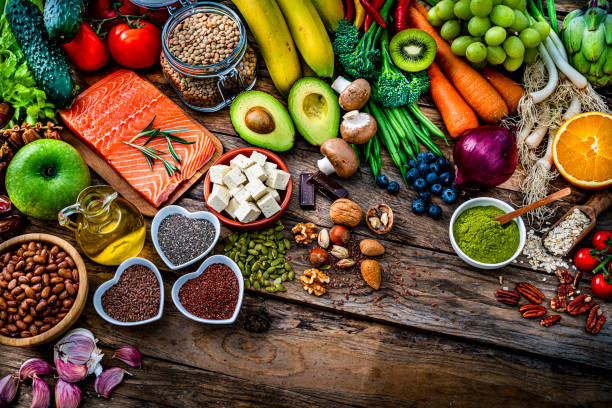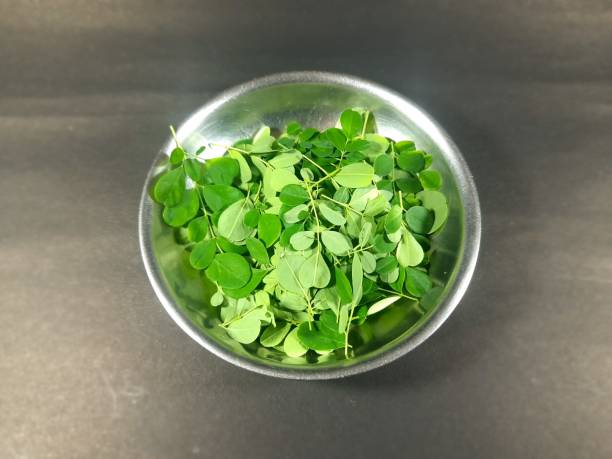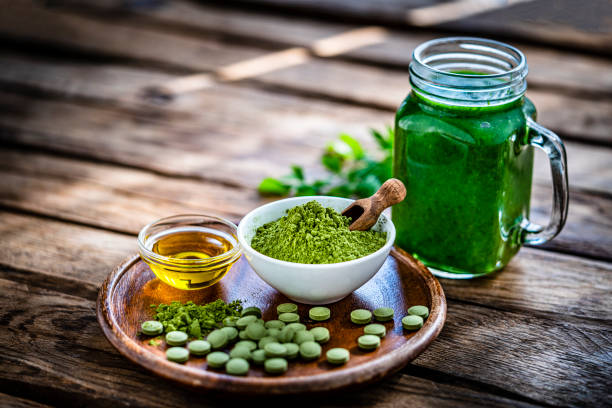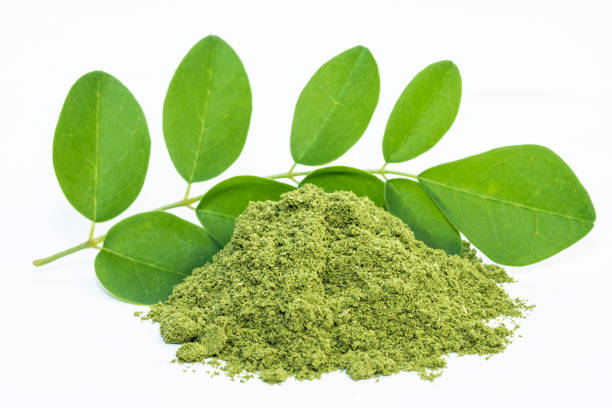Moringa Leaves recipe you never tired, but should

If you’re looking to boost both nutrition and flavor in your meals, trying a moringa leaves recipe is a great place to begin. Known as the “miracle tree,” moringa offers leaves rich in vitamins, minerals, and antioxidants, making it easy to transform simple dishes into vibrant, nourishing meals that support overall wellness.
Moringa leaves have a mild, earthy taste that works well in soups, stir-fries, omelets, and even smoothies. Naturally gluten-free and vegan, they’re a versatile ingredient that fits a variety of diets, making it simple to add a healthy twist to your everyday cooking.
Why Moringa Leaves Recipe Deserve a Place in Your Kitchen
The appeal of moringa isn’t just a trend—its leaves contain an array of essential nutrients, rivaling many common vegetables. A quick glance at the nutritional profile demonstrates why communities across Asia, Africa, and South America have used it for generations. Rich in protein, iron, calcium, magnesium, and vitamins A, C, and E, moringa offers support for immunity, energy, and skin health.
If you track nutritional options for plant-based diets, moringa leaves stand out for their protein content. Unlike many greens, moringa offers all nine essential amino acids in good proportions—a rare find in the plant kingdom.
Comparing Moringa’s Nutritional Value
| Nutrient | Moringa Leaves (per 100g, fresh) | Spinach (per 100g, fresh) |
|---|---|---|
| Protein | 9.4 g | 2.9 g |
| Vitamin A | 678 IU | 469 IU |
| Vitamin C | 220 mg | 28 mg |
| Calcium | 185 mg | 99 mg |
| Iron | 4. mg | 2.7 mg |
This table offers just a glimpse of how moringa stacks up. Notice the dramatic leap in vitamins A and C, making moringa particularly good for skin and immune function.
Preparing Moringa Leaves Recipe the Easy Way

One of the beauties of moringa is that its leaves cook fast and require minimal fuss. There’s no need for extensive prep or elaborate technique. Whether you prefer subtle flavors or bold, spicy notes, moringa leaves can adapt to your style.
Before cooking, rinse the leaves thoroughly in clean water to remove any dust or small insects. If you purchase them from a market or pick them fresh, the tender stems can be included for additional texture. Harder, woodier stems should be set aside.
For the fastest way to include moringa leaves in your meals, try these methods:
- Add raw leaves to smoothies for a vitamin boost.
- Scatter onto salads for a peppery undertone.
- Stir into soups or stews as you would with spinach.
Yet, if you want something more substantial, a quick stir-fry brings out their best qualities. Let’s look at a classic recipe you can whip up in less than twenty minutes.
1. Classic Moringa Leaves Stir-Fry
This simple dish highlights moringa’s earthy flavor while enhancing it with aromatic spices and healthy fats.
Ingredients
- 2 packed cups fresh moringa leaves (rinsed)
- 1 small onion, finely chopped
- 2 cloves garlic, minced
- 1 small tomato, diced
- 1/2 tsp turmeric powder
- 1/2 tsp cumin seeds
- 2 tbsp coconut oil (or olive oil)
- Salt and pepper, to taste
- 1 small green chili (optional)
- Squeeze of lemon or lime
Instructions
- Heat the oil in a heavy skillet over medium heat.
- Add cumin seeds and let them sizzle for a few seconds.
- Stir in the onion and sauté until translucent, about 2-3 minutes. Toss in the garlic and cook till fragrant.
- Mix in the chili and tomato. Cook until tomato softens, about 5 minutes.
- Sprinkle turmeric into the skillet. Pour in the moringa leaves, stirring gently.
- Cover and cook for 3-4 minutes, just enough for the leaves to wilt and turn dark green.
- Season, turn off the heat, and add lemon or lime juice for brightness.
Serve warm as a side dish, or spoon over grains for a balanced meal.
2. Moringa Stir-Fry with Garlic and Peppers
Ingredients:
- 2 cups fresh moringa leaves, washed and stems removed
- 1 red bell pepper, sliced
- 2 cloves garlic, minced
- 1 small onion, thinly sliced
- 1 tablespoon olive oil or coconut oil
- Salt and black pepper to taste
- 1 teaspoon lemon juice
Instructions:
- Heat oil in a large skillet over medium heat.
- Add onion and garlic, sautéing until fragrant and translucent.
- Stir in bell pepper and cook for 2–3 minutes until slightly softened.
- Add moringa leaves and sauté gently for 2–3 minutes, just until wilted but still vibrant.
- Season with salt, pepper, and a splash of lemon juice.
- Serve warm as a side dish or over steamed rice for a light meal.
3. Creamy Moringa Leaf Soup

Ingredients:
- 2 cups fresh moringa leaves
- 1 medium potato, peeled and diced
- 1 small carrot, chopped
- 1 small onion, chopped
- 2 cloves garlic, minced
- 3 cups vegetable broth
- 1/2 cup coconut milk
- 1 tablespoon olive oil
- Salt and pepper to taste
- Fresh herbs for garnish (optional)
Instructions:
- Heat olive oil in a pot over medium heat. Add onion and garlic, sauté until soft.
- Add potato and carrot, cook for 3–4 minutes.
- Pour in vegetable broth and bring to a boil. Reduce heat and simmer until vegetables are tender, about 10 minutes.
- Add moringa leaves and cook for 2–3 minutes until wilted.
- Use an immersion blender to puree the soup until smooth.
- Stir in coconut milk, season with salt and pepper, and heat through.
- Serve hot, garnished with fresh herbs if desired.
4. Moringa Leaf and Chickpea Patties
Ingredients:
- 1 cup fresh moringa leaves, finely chopped
- 1 can (15 oz) chickpeas, drained and rinsed
- 1 small onion, finely diced
- 2 cloves garlic, minced
- 1/4 cup grated carrot
- 1/4 cup chickpea flour or breadcrumbs
- 1 teaspoon cumin powder
- 1/2 teaspoon chili flakes (optional)
- Salt and pepper to taste
- 2 tablespoons olive oil (for frying)
Instructions:
- In a large bowl, mash the chickpeas with a fork or potato masher until mostly smooth but still slightly chunky.
- Add the moringa leaves, onion, garlic, grated carrot, chickpea flour or breadcrumbs, cumin, chili flakes, salt, and pepper. Mix until well combined.
- Shape the mixture into small patties.
- Heat olive oil in a skillet over medium heat.
- Cook the patties for 3–4 minutes on each side, or until golden brown and crisp.
- Serve warm with a side of yogurt dip, chutney, or in a pita wrap with fresh vegetables.
Cooking Tips for Best Results
Moringa leaves cook quickly, much like spinach, but they maintain a pleasant texture when not overcooked. For the best flavor and to prevent bitterness:
- Avoid leaving the leaves on high heat for extended periods.
- Pair moringa leaves with naturally sweet vegetables such as bell peppers or corn to soften their earthy notes.
- Add a splash of citrus juice or mild vinegar to brighten and balance the flavors.
For an even milder taste and to remove any residual grit, briefly blanch the leaves before cooking. This simple step enhances both the flavor and texture of your moringa leaves dish.
Variations to Suit Your Pantry
Moringa leaves are wonderfully versatile, making them perfect for creative cooks and diverse diets:
- Switch up your cooking oil—try ghee for richness, or use olive or avocado oil for a lighter touch.
- For a South Indian flair, add freshly grated coconut just before finishing the dish.
- Boost the protein content by stirring in chickpeas or diced tofu, making the meal more filling and nutritious.
- For extra crunch and flavor, sprinkle roasted peanuts or sesame seeds on top right before serving.
Moringa’s adaptability makes it a favorite for families with dietary needs. Whether you’re preparing gluten-free, vegan, or paleo meals, moringa leaves can be seamlessly incorporated, offering both nutrition and delicious flavor.
Going Beyond the Stir-Fry
Outside of a simple pan preparation, moringa leaves show their versatility in other recipes. Here are a few ideas you can try whenever you crave variety:
Moringa Egg Scramble
Whisk eggs in a bowl, then gently fold in a generous handful of fresh moringa leaves. Pour the mixture into a skillet and cook slowly over low heat, stirring occasionally, just as you would with fresh herbs. The moringa leaves will wilt and infuse the eggs with a mild, earthy flavor.
For a dairy-free and vegan alternative, substitute the eggs with a batter made from chickpea flour and water. Simply mix chickpea flour with enough water to achieve a thick, pourable consistency, then stir in the moringa leaves and cook as you would a traditional scramble. This version delivers a protein-rich, plant-based breakfast with all the benefits of moringa.
Moringa Leaf Dal
Simmer cooked lentils with a handful of fresh moringa leaves, minced garlic, and a touch of grated ginger. Let the flavors meld over gentle heat until the moringa leaves are tender and the dal is fragrant. Serve this nourishing dal ladled over steamed rice or alongside warm flatbread for a wholesome, comforting meal packed with plant-based protein and vibrant greens.
Nutritious Smoothie Booster
Blend a small handful of fresh moringa leaves with pineapple, banana, and coconut water. The moringa taste is subtle, but the nutrients are undeniable.
Buying and Storing Moringa Leaves
Fresh moringa leaves are often available at specialty grocery stores, particularly those serving Asian, African, or Indian communities. You may also find them at local farmer’s markets, depending on your region and the season. When selecting moringa leaves, choose bunches that are vibrant green, crisp, and free from wilting or yellowing.
To enjoy moringa leaves year-round, try these storage methods:
- Refrigeration: Wrap fresh leaves in a damp cloth or paper towel and store them in the refrigerator. They’ll stay fresh for up to 3–4 days.
- Freezing: Chop the leaves and freeze them in airtight containers or freezer bags. This method preserves their nutrients and makes them easy to add to cooked dishes later.
- Drying: Spread the leaves out in a single layer and air-dry or use a dehydrator. Once fully dried, grind them into a fine powder for a concentrated nutritional boost that can be sprinkled into recipes.
If fresh moringa leaves aren’t available, high-quality moringa powder is a convenient alternative. Mix it into soups, smoothies, sauces, or even pancake batter to enjoy its benefits any time of year.
Shop the Best Moringa Products for Your Recipes

If you’re ready to start cooking with Moringa, having the right products can make all the difference in taste, quality, and health benefits. Whether you’re blending smoothies, brewing tea, or cooking delicious meals, these hand-picked Moringa products will help you get the most out of every recipe. Below are my top recommendations—tried, trusted, and perfect for everyday use.
Note: This section contains affiliate links. If you make a purchase through these links, I may earn a small commission at no extra cost to you. Thank you for supporting the blog!
Best Dried Moringa Leaves – Organic India Moringa Leaves
Perfect for traditional recipes, teas, and stews. These dried leaves are hand-harvested and sun-dried to preserve nutrients and flavor.
Why I recommend it:
- Ideal for soups, herbal tea, and stir-fries
- Preserves the authentic, earthy taste of fresh leaves
- Certified Organic and sustainably sourced
2. Best Moringa Capsules – Moringa Magic Capsules
Prefer a quick and tasteless option? These capsules are packed with potent Moringa extract for daily wellness without needing to cook or blend anything.
Why I recommend it:
- No taste or prep needed
- Great for busy lifestyles
- Supports metabolism, detox, and energy
3. Best Moringa Leaf Powder – Kuli Kuli Organic Moringa Powder
A high-quality, nutrient-rich powder that blends perfectly into smoothies, soups, and sauces. It’s USDA Organic and non-GMO. Great for boosting energy and immunity daily.
Why I recommend it:
- 100% pure Moringa leaves
- Smooth texture, easy to mix
- Strong nutrient profile with vitamins A, C, and E
Tips for Growing Your Own Moringa
If you love gardening, growing your own moringa can be incredibly rewarding. Moringa trees flourish in warm, sunny climates and are known for their rapid growth—sometimes shooting up several feet within just a few months. Even if you live in a cooler region, you can successfully cultivate moringa in containers, bringing them indoors during colder months and trimming them regularly to encourage lush, leafy growth.
Key tips for success:
- Choose well-drained soil: Healthy roots are essential, so plant moringa in soil that drains easily to prevent waterlogging.
- Prune regularly: Frequent trimming encourages the plant to grow bushier, producing more tender leaves for harvest.
- Harvest young leaves: The youngest, most tender leaves offer the best flavor and texture for cooking.
With a little care and attention, you can enjoy a steady supply of fresh, nutrient-rich moringa leaves right from your own garden.
Why Home Cooks Keep Returning to Moringa
Once you’ve tasted fresh-cooked moringa leaves, the reason becomes clear. Their distinct yet mild flavor, abundant nutrition, and ease of preparation make them a staple worth adding to any menu rotation.
Pair them with everyday ingredients, explore cross-cultural recipes, or simply sauté with garlic and oil when short on time. Each approach brings out different qualities in this spirited green.
For anyone seeking to add energy, vibrancy, and a little culinary adventure to their plate, moringa leaves make it easy to cook nutritiously and deliciously, even with a busy schedule. Whether you’re a seasoned home chef or just starting to experiment in the kitchen, moringa is a resilient, rewarding option that never stays in the pantry for long.
conclusion
Incorporating moringa leaves recipe into your cooking is a simple yet powerful way to enhance both the nutrition and flavor of your meals. Whether you’re experimenting with new recipes or adding them to familiar favorites, moringa leaves offer a wealth of health benefits and culinary versatility. Embrace this remarkable superfood in your kitchen, and enjoy dishes that not only taste delicious but also support your wellbeing every day.
